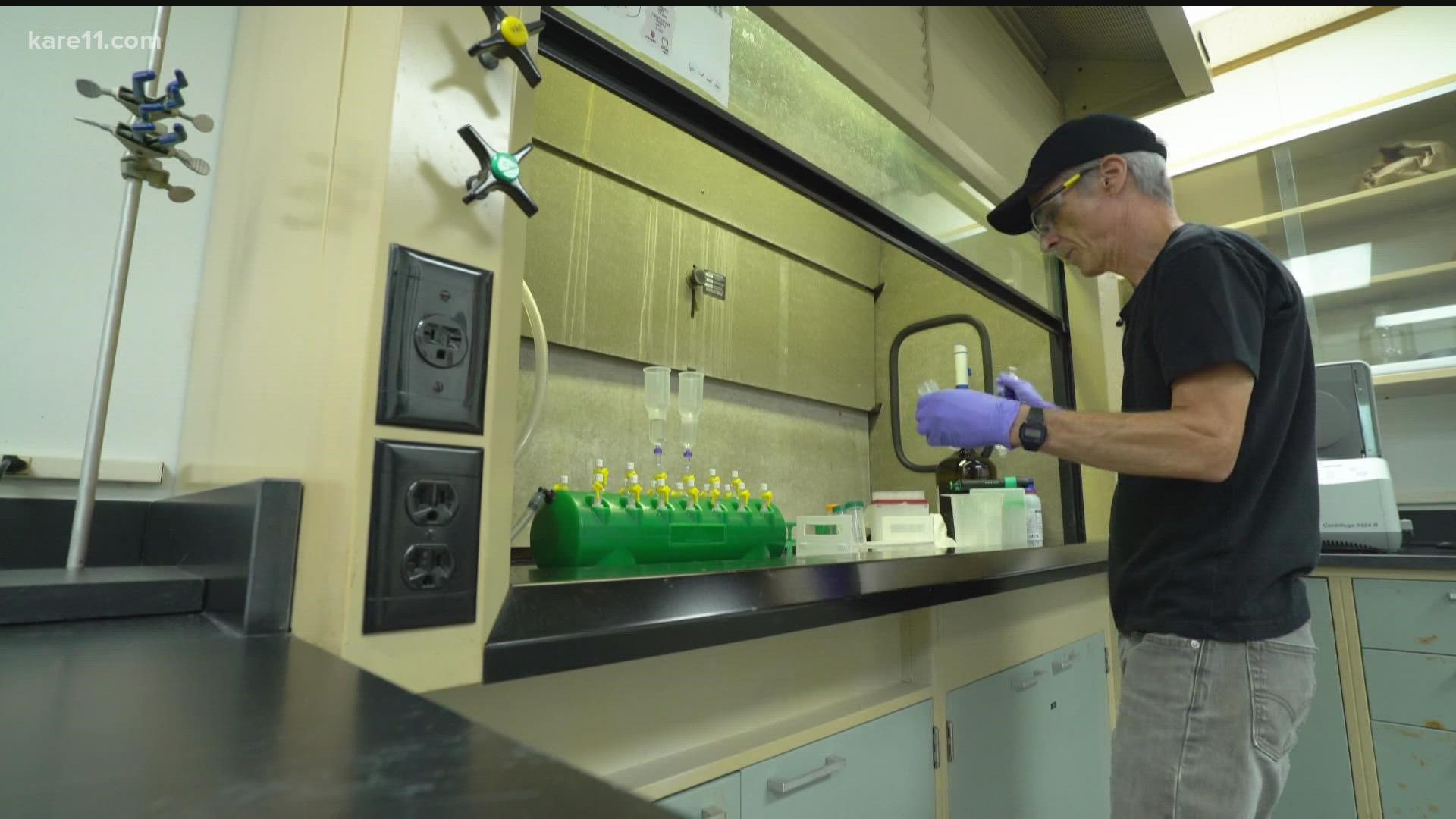MINNEAPOLIS — Researchers at the University of Minnesota's Medical School predict the current outbreak of omicron could be reaching its peak within the next two weeks in the Twin Cities metro.
The university, along with officials from the Minnesota Department of Health, say the promising news comes after data was processed from 13 different wastewater plants throughout the metro.
The first potential peak of the omicron variant was observed in sewage samples taken from the metro wastewater plant in St. Paul. The Met Council operates the site, which serves roughly 1.9 million Minnesotans. Since Jan. 9, a publicly available dashboard shows that COVID virus levels have dropped nearly 30% at the metro plant.
Officials say other regions of the state, however, show evidence of continued spread. From facilities in the northwest to the southeast, the red trend lines don't show any clear peak yet in five of the seven geographic regions tracked by the U of M.
“We’ve learned that wastewater gives us a two-week heads up about COVID prevalence in communities statewide,” said Tim Schacker, MD, the vice dean for research at the U of M Medical School.
According to the U, the south-central region of Minnesota is the only other part of the state showing a trend downward in COVID infections. That data included wastewater samples from five plants.
“Working with the Minnesota Department of Health, we now have a statewide network of 44 wastewater treatment plants regularly testing for evidence of COVID, meaning we can share potential coming spikes in cases to let local communities prepare,” Schacker said.
The U of M and MDH were also able to predict the rise of the delta variant more than a week before the first case in Minnesota was detected last year. Scientists say viral detection in wastewater tends to show up in those few weeks before patients begin to flood into hospitals and clinics.
Though it's a rare sign for optimism from an unlikely source, Schacker says the amount of COVID in our wastewater in the metro area may be falling, but it still has a long way to go.
"It's amazing. We had to completely adjust how we express the data, because the quantity of virus is just so much greater than we saw with delta," Schacker said.
He added, "We shouldn't kid ourselves. There is still a tremendous amount of infection out there."
The university says it will continue to work with MDH to use wastewater as a way to monitor a range of viral outbreaks, including influenza and HIV.
“We were among the first public universities in the nation to conduct statewide surveillance in this manner and in partnership with the state government,” Schacker said. “What we’ve learned from this work during COVID-19 will serve us well in the future as other viruses or bacterial infections emerge.”
Watch more Breaking The News:
Watch all of the latest stories from Breaking The News in our YouTube playlist:

